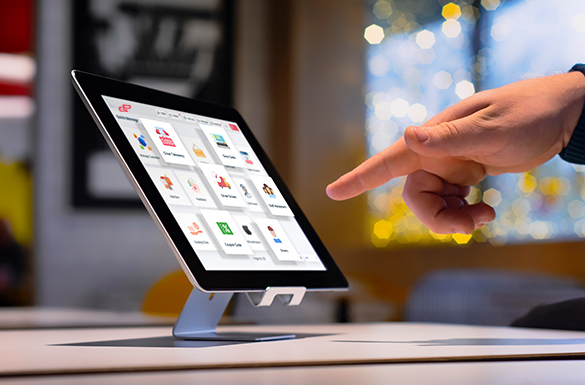
By QbitPOS | March 17th, 2023
Maximizing Your Revenue: Tips for Using a POS System Effectively
"The success of any business lies in its ability to maximize revenue," said Robert Kiyosaki, a renowned entrepreneur and author. A point of sale (POS) system offers a powerful tool to do just that, by streamlining operations, improving customer service, and increasing customer loyalty. In this blog post, we will discuss some tips on how to use a POS system effectively so that you can maximize your revenue. Let's get to the basics first.
Features and Functions POS System
Point-of-Sale (POS) systems are powerful tools used by businesses to streamline day-to-day operations. POS systems provide accurate sales tracking, inventory management, customer loyalty programs, detailed reporting, and much more. Here is an overview of some of the features and functions that a POS system can provide for businesses.
Inventory Management
POS systems make it easy to manage your inventory levels. Businesses can track product sales in real-time and get instant notifications when stock levels are running low. This makes sure that businesses never run out of products they need while also avoiding excess inventory costs.
Customer Loyalty Programs
With a QbitPOS system, businesses can create customer loyalty programs to retain customers and increase repeat visits to their stores. These programs typically involve collecting customer data like purchase history so that businesses can offer personalized discounts or rewards to incentivize customers to come back more often. Customers can also utilize digital wallets or cashless payment options through the POS system for added convenience.
Detailed Reporting
POS systems provide highly detailed reports that allow users to quickly analyze their business’s performance over time. With these reports, users can view sales trends, identify high demand items, measure employee performance, identify potential losses due to theft or mismanagement, and much more. This data is invaluable for making informed decisions about how best to run the business going forward.
Employee Management
QbitPOS systems also make it easy for businesses to manage their employees’ hours and workloads. Users can assign tasks according to employee skill sets while taking into account individual schedules so that there is no overlap in labor costs or overtime hours incurred by staff members. Employees themselves can use the system to clock in/out of shifts as well as view their pay stubs electronically. This eliminates paperwork while providing real-time visibility into staff operations across multiple locations if necessary.
5 Tips for Using a POS System Effectively
Here are 5 Tips for Using a POS System effectively to drive sales.
Have an Implementation Plan
When implementing a POS system, it is important to have a comprehensive implementation plan that outlines all of the tasks that need to be completed in order to ensure the successful introduction of the technology. This plan should include training staff on the system, configuring hardware and software settings, testing the system for accuracy, and setting up inventory management processes.
Choose a System That's Right for Your Business
The right POS system can help you manage operations more efficiently, increase customer satisfaction levels, and save money in the long run. But choosing the wrong one can cost you time and money down the line. So it's essential to select a POS system that fits with your current business size, future plans for growth, available budget, and specific industry needs.
Train Your Staff Properly
Once you've chosen your POS system, it's important to properly train your staff in its use to ensure that everyone is familiar with how it works and its various features. Make sure to provide clear instructions on how transactions should be handled from start to finish as well as how customers should be served at each step of their visit or purchase.
Automate Where Possible
POS systems come equipped with many automated features that can save businesses time and money while also improving accuracy levels across departments like sales tracking and inventory management. Automation features such as scheduling services or generating reports can streamline many of these processes while allowing staff more time to focus on customer service efforts instead of manual data entry tasks.
Stay Up To Date With Regular Maintenance
Once you've got your POS system up and running smoothly it's important not to forget about regular maintenance checks in order to ensure everything continues working optimally over time. Setting aside scheduled times for maintenance activities such as updating software versions or troubleshooting any issues with hardware components will ensure your POS system runs smoothly no matter what challenges arise throughout its lifespan.
Final Thoughts
Congratulations – you’re now armed with the knowledge and information necessary to maximize your revenue and make smart decisions when it comes to operating a POS system. Understand your numbers and use them to make better decisions on how—and what—to sell. Take into account customer feedback and preferences so that you can spend your resources more wisely.
Ultimately, it's up to you to determine the direction they want to take in terms of selling products or services with the help of their POS system – either online or offline. We hope these ideas and best practices discussed here today will guide you in the right direction with your efforts in maximizing revenue and getting ahead. We hope it helps.